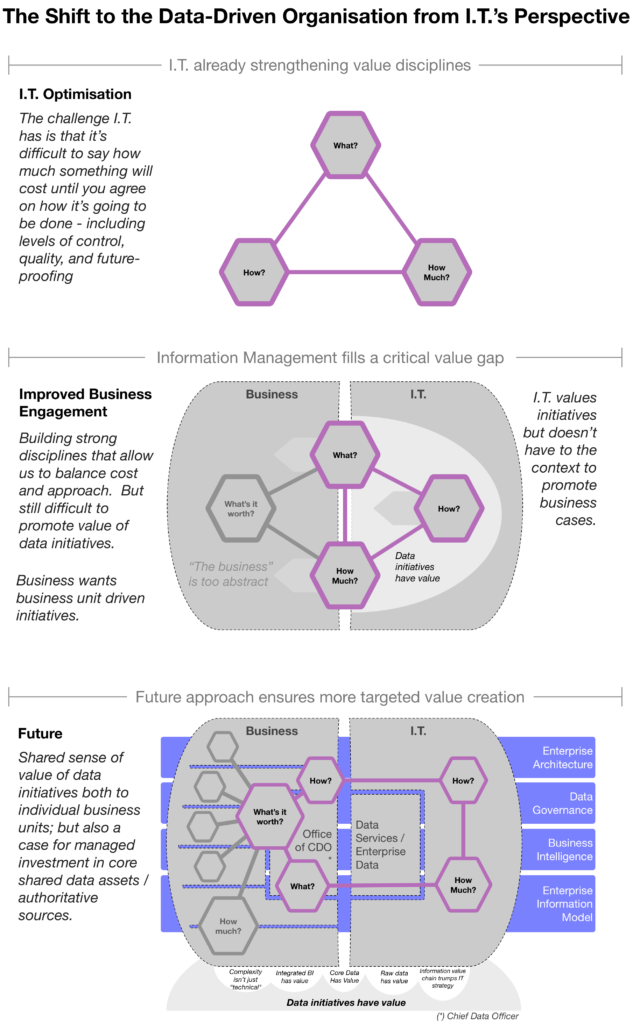The idea of business / IT alignment is completely at odds with the challenge of business agility. You can never align all-of-the-business with all-of-the-IT. You can only ensure that the business capabilities your organisation’s operating model depends on sufficiently utilise information technology in order to ensure competitive levels of productivity, optimal customer experience, and coordination with other business capabilities.
The idea of business / IT alignment is admirable when it implies that in model business operations there is a concept of “business” concerns and their is a concept of “IT” concerns and that they are peers. The process of business / IT alignment then would be a messy and complex process that might eventually work. However, business / IT alignment never gets implemented as a process that assumes business and IT are peers. Even if it was, it’s foolish to break your organisation along the lines of business versus IT – there are other ways of cutting up the organisation that eliminate the need for business / IT alignment altogether.
This is further exacerbated by the shift of IT budget to business units. Once budget that had traditionally been thought of as IT budget gets shifted into, say, marketing, it would be ridiculous for the marketing department to then raise a concern about the business / IT alignment challenges they were having when spending their new increased budget. Once you’re responsible for both why complain about alignment? If you own the budget you have nobody to complain about business/IT alignment to.
I’ve written before about how much of what people in the so-called “business” think of as “IT issues” are really related to information, complexity, or simply willingness to spend time on the details. When a business process is automated – does it then become an IT problem? It is a sign that our understanding of the dynamics involved in the implementation of information systems – which it is now trendy to call “digitisation” – has certainly outpaced our popular understanding of how organisations are designed and governed when these simple questions still have complex answers.
We have a number of real problems governing our organisations. Business and IT concerns aren’t ever broken down to specifics, the whole concept of splitting business and IT places barriers to true organisational agility, and there still isn’t an understanding that in the modern world the high-level concept of “the business” and “IT” don’t exist. This separation is make for the convenience of executive leadership and have limited organisational value.
I’ve previously proposed the simplest change might be to stop creating ICT strategies. I’m not saying an overall strategy for certain aspects of IT isn’t required. I’m simply saying that an overall strategy for the organisation is more important. If you have a business strategy and an ICT strategy is it any wonder you have business / IT alignment issues? Of course you have alignment issues! You have two seperate strategies.
This is exacerbated by the fact that your business / corporate strategy probably doesn’t contain the sorts of things the folks developing your ICT strategy expect to see anyway. They probably have to go to individual business unit strategies to get the information they need and ultimately the ICT folks are left to try and align the inconsistencies that will inevitably exist between all of these business unit strategies.
A strategy development and strategy deployment process grounded in business capabilities is of course the answer.



